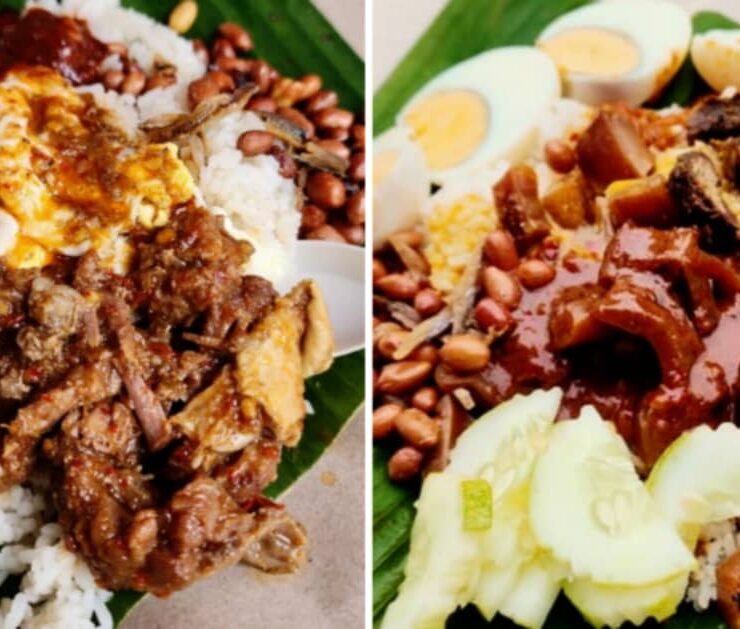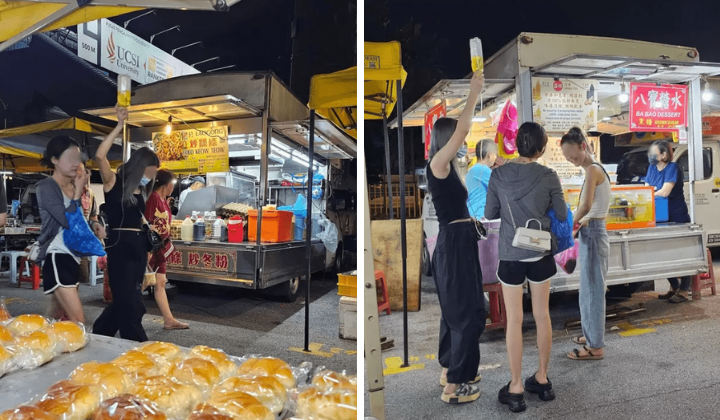14 Different Foods That You Should Taste In Each Malaysian State (Part 2)
From different types of nasi and noodles to various types of kuih and appetizers, we listed a lot of Malaysian food that you should try in each state.
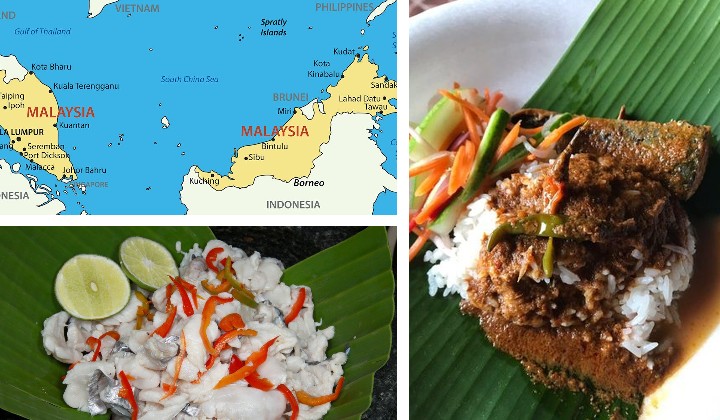
Subscribe to our Telegram channel for the latest stories and updates.
We’re starting this list halfway because this is part two. Check out part one here.
9. Kelantan – Nasi Kerabu
Nasi Kerabu (Herb Rice) is famous in the east coast states of Malaysia, especially Kelantan, where it originated from. Getting the blue coloured rice hue from the telang (butterfly pea) flower, this dish is basically rice served with local salad called ulam which consists of various fresh herbs and vegetables.
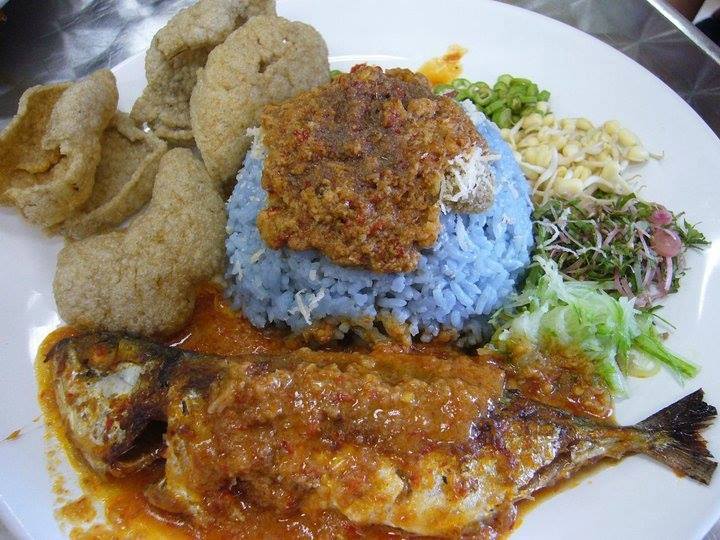
To complement the dish, it is also served with turmeric battered fried fish, solok lada (stuffed chilli peppers), salted eggs, fish crackers, fried grated coconut and their special sambal. Other side dishes to replace the fish can be grilled meat or chicken.
Honourable Mentions : Nasi Tumpang, Laksam Kelantan

Credit: @HezryZaidi, @Ikki_ayjay / Twitter
Furthermore, Kelantan also has Nasi Tumpang (rice with different layers of dishes wrapped in a pyramid cone shape by a banana leaf) and Laksam Kelantan (a variation of Laksa but in a different shape and with white gravy).
10. Terengganu – Nasi Dagang
Popular in Terengganu, Nasi Dagang or Trader’s Rice is a dish of rice steamed in coconut milk, with ikan tongkol (mackerel fish) curry and acar (pickled cucumber and carrot).
Terengganu Nasi Dagang uses a mixture of white rice and glutinous rice, cooked together with coconut milk, which gives a glossy and shiny look to the rice. This is unlike the Kelantan version of Nasi Dagang, which uses brown rice instead.
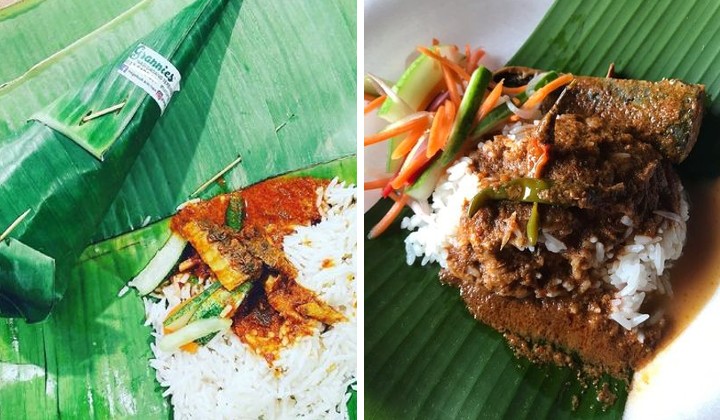
The name of the dish is thought to have originated from Bugis traders who accidentally mixed normal rice and glutinous rice to serve the Sultan of Terengganu at the time.
Although you can eat it at any time of the day, this is actually a breakfast dish in Terengganu commonly served during Eid al-Fitr.
Honourable Mentions: Keropok Lekor, Sata

Credit: @kfvith / Twitter , Mohd Shaifudin / Facebook
Other than that, Keropok Lekor (sausage-like snacks consisting of fish and flour) and Sata (grilled spiced fish meat wrapped in banana leaves, like otak-otak) is also famous in Terengganu.
11. Pahang – Gulai Ikan Patin Masak Tempoyak
Made with fermenting durian flesh with salt for a minimum of two days to two weeks, tempoyak (a kind of fermented mash) is usually made from excess overripe or unconsumed durian during the durian season.

Credit: Bonda Aleena, Aleya Seolihah / Facebook
Tempoyak can be made into Sambal Tempoyak, Pais Ikan Tempoyak (grilled fish with tempoyak) and also Gulai Patin Ikan Tempoyak (curry-like sauce with fish and tempoyak).
Popular in Temerloh, Pahang as they have a breeding area for the Patin fish (Pangasius/River Catfish), Gulai Ikan Patin Tempoyak is a rich gravy cooked with the Patin fish and tempoyak which results in an exquisite balance of tartness, spiciness, and sweetness.
Honourable Mentions: Gulai Asam Rong, Puding Diraja
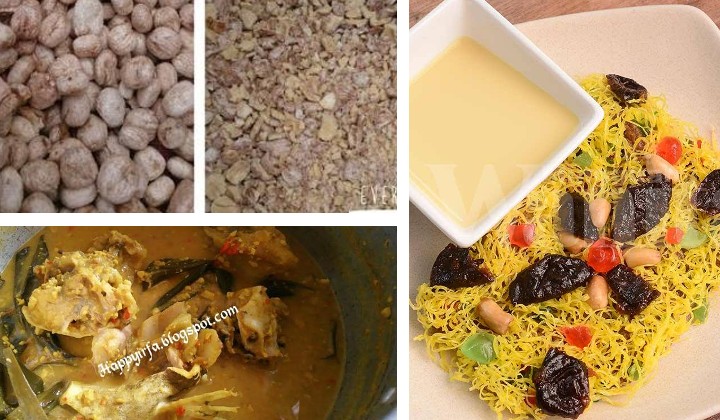
Credit: Happy Irfa / Blog, Mingguan Wanita / Facebook
Additionally, you can also find Gulai Asam Rong (gravy cooked with flavours of powdered fermented seeds of the rubber tree) and Puding Diraja (royal pudding consisting of fried banana fritters, layered with Jala Mas, topped with nuts and dried fruits as a garnish as well as a custard sauce) in Pahang.
12. Johor – Kacang Pool
Imagine Middle Eastern and Malay food fusion. You’ll get kacang pool. That’s what inspired Haji Makpol Kairon a.k.a Matpol, who invented this dish nearly 33 years ago.

Kacang Pool is a Johor-born dish made from a mixture of fava/broad/foul beans, minced meat and some spices for seasoning. Usually eaten at breakfast, this dish is served as a dip with toasted sandwich bread.
Originated from the middle east, this dish called Foul Mudammas (egyptian fava beans with spices) intrigued Haji Makpol when he was in Mecca in 2009. He tried to replicate the recipe with a twist of the Malaysian palate and now he has around 5 outlets in Johor including in Putrajaya too.
Honourable Mentions: Laksa Johor, Pisang Goreng Cicah Sambal Kicap
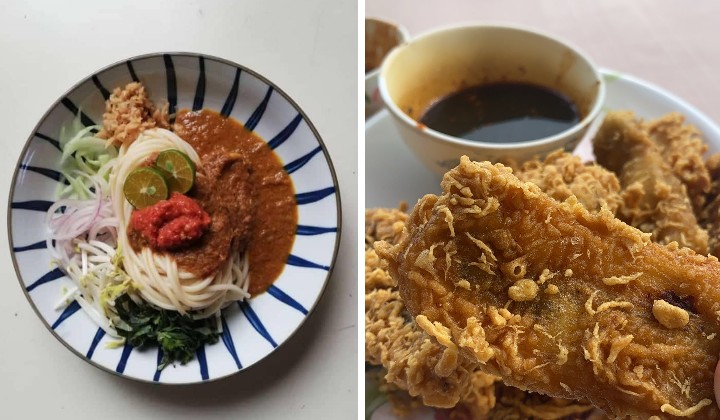
Credit: @LeAlterEgo / Twitter, Laksa Johor / Facebook
Also on the list is Laksa Johor (a variation of laksa but with spaghetti instead of the rice noodles with an orange hue of a thick gravy) and Pisang Goreng Cicah Sambal Kicap (your banana fritters but with a spicy soy sauce and chilli dip).
13. Sarawak – Manok Pansuh
Manok Pansuh/Ayam Pansuh is a Sarawak dish which literally means chicken cooked in bamboo in Iban.

The chicken is marinated with some seasonings and herbs before it is stuffed into a bamboo stalk together with some water for soup later on. Then, the bamboo is stuffed with rolled tapioca leaves from the cassava plant covering the open end. They are cooked traditionally near an open fire to be roasted slowly.
This healthy dish is usually prepared by the Ibans and Bidayuhs during festivals, especially during the Gawai Dayak (thanksgiving for a bountiful harvest).
Honourable Mentions: Laksa Sarawak, Mee Kolok
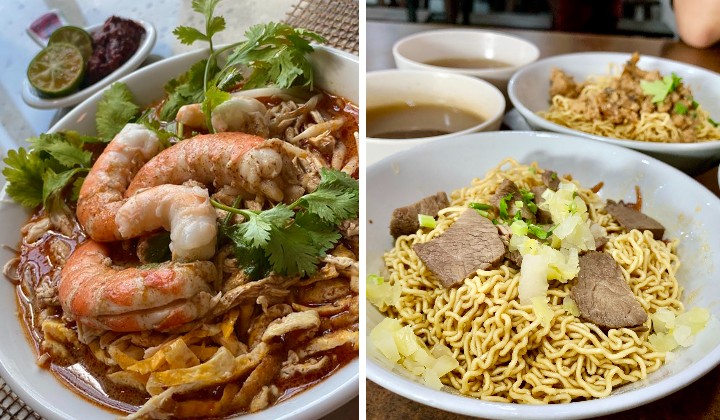
Credit: @CorrineAbdullah, @Ombonbonbon / Twitter
Moreover, in Sarawak, they have their own version of Laksa Sarawak (served with thin rice vermicelli, a different version of broth and topped with shredded chicken and omelette strips) and are also famous for their Mee Kolok (springy and thin dry egg noodles tossed with some seasoning and topped with savoury beef/chicken/pork[non-halal]).
READ MORE: “Exotic” Local Food Abound In Sarawak For Foodies Wanting To Scratch That Travel Itch
14. Sabah – Ambuyat
Apart from being the national dish of our neighbouring country, Brunei, Ambuyat, also native to Sabah, is a sticky and gooey dish that is made from the trunk of the sago palm.
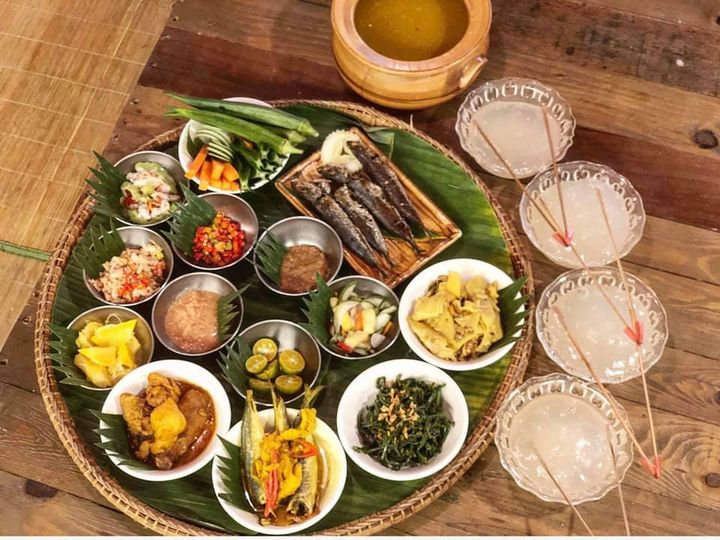
Credit: My Native Sabah / Facebook
Ambuyat has a texture of glue and it is ideally eaten with a utensil that looks like a pair of attached chopsticks called candas. The sticks are twirled into the ambuyat and dipped into some sour and spicy gravy or sauces.
Ambuyat does not have a taste of its own, with many claiming that it “tastes like nothing at all”. However, this means that it can easily replace rice in many dishes and allows its side dishes to take the spotlight. Ambuyat is usually served with grilled fish, raw veggies, and more.
Honourable Mentions: Hinava, Mee Tuaran

Credit: @hanaeli9, @jofannabridal / Twitter
Last but not least, Sabah is super famous for its Hinava (raw lime juice-marinated fish mixed with herbs and seasonings) and its version of mee called Mee Tuaran (fried thin egg noodles that came from the name of its town, Tuaran, Sabah).
If you’re wondering what food the other states are offering, take a look at our previous article for part 1.
READ MORE: 14 Top Foods To Try In Each & Every Malaysian State [Part 1]
So there you have it. If you do go on a tour to each and every state in Malaysia, do try out these dishes and tell us if they’re worth travelling for.
READ MORE: Did You Know Each Malaysian State Has Its Own Special Traditional Baju Designs?
READ MORE: 7 Unique And Exotic Foods That Can Be Found In Malaysia
Share your thoughts with us via TRP’s Facebook, Twitter, and Instagram.




